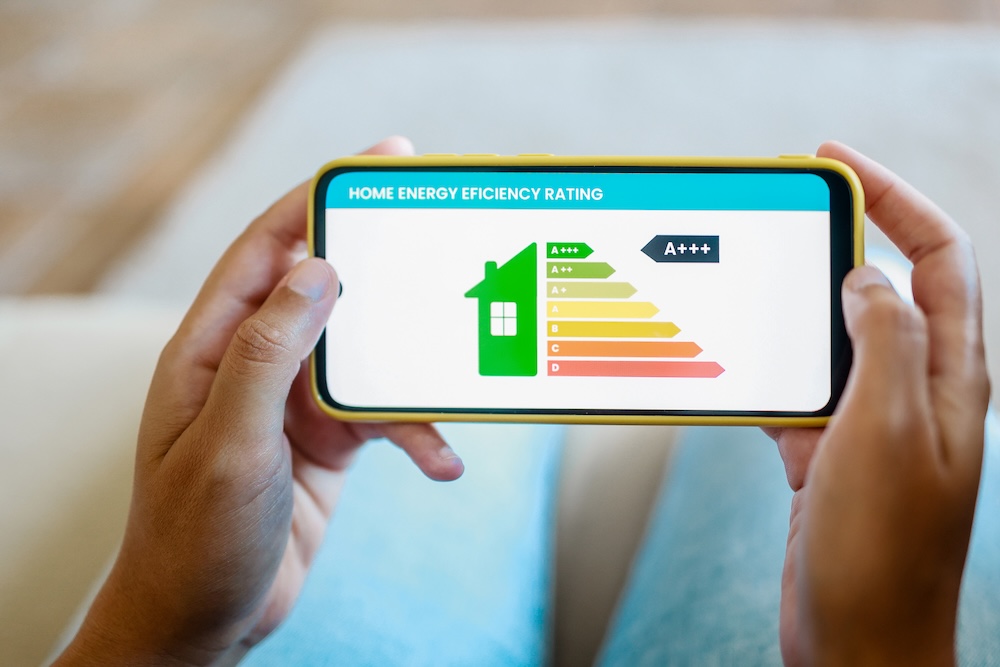Trying to make your home more energy efficient? You might be missing out on hundreds — or even thousands — in tax credits and rebates that already exist to help. Whether you’re swapping your thermostat, upgrading your insulation, or going all-in on a heat pump, there’s probably a program that will give you money back.
This guide walks you through 7 of the most important home energy tax credits and rebates available right now, how to qualify, and how to get every dollar you’re owed.
1. The Energy Efficient Home Improvement Credit (Form 5695)
This is the big one. Thanks to the Inflation Reduction Act, homeowners can now claim a 30% tax credit for a wide range of energy efficiency upgrades — up to $1,200 per year.
What qualifies:
- Insulation and air sealing
- Exterior windows and doors
- Smart thermostats and energy monitors
- Home energy audits (up to $150)
- Electric panel upgrades (up to $600)
How to claim it: File IRS Form 5695 with your tax return. Keep receipts and manufacturer certifications for all upgrades.
Annual credit limits:
- $600 for windows
- $250 per door, max $500 for all doors
- $600 for panel upgrades or electric wiring
- $150 for energy audits
- Combined annual limit: $1,200
This credit resets each year through 2032, so you can spread projects over time and keep earning.
2. The Residential Clean Energy Credit (formerly Solar Tax Credit)
This is for big-ticket renewable energy systems. You can deduct 30% of the cost of clean energy installations, with no dollar limit, and it’s available through 2032.
What qualifies:
- Solar panels (PV systems)
- Solar water heaters
- Wind turbines
- Geothermal heat pumps
- Battery storage (starting 2023)
How to claim:
Again, use IRS Form 5695. The credit carries forward if you don’t owe enough tax in one year.
Example: Spend $15,000 on solar panels? That’s a $4,500 tax credit — not a deduction, but a dollar-for-dollar reduction in what you owe.
3. High-Efficiency Electric Home Rebate Program (coming in 2025–2026)
This rebate program is launching in phases under the Department of Energy, designed especially for low- and moderate-income households.
What you may get:
- Up to $8,000 for a heat pump
- $1,600 for insulation, air sealing, and ventilation
- $2,500 for electrical panel upgrades
- $4,000 for rewiring
- $840 for induction stoves, heat pump water heaters, or dryers
This program is based on income — households earning below 150% of their area’s median income will qualify. Funds are expected to roll out state-by-state, so check with your local energy office.
4. Utility Rebates for Smart Thermostats and Efficient Equipment
Many utilities offer instant rebates when you buy or install:
- Smart thermostats ($50–$200 off)
- ENERGY STAR-certified appliances
- Heat pumps and efficient HVAC systems
- LED lighting bundles
- Weatherization kits
Some utilities even offer free smart thermostats with enrollment in demand-response programs.
How to claim:
- Go to your utility’s website and search for “rebates” or “energy savings programs”
- Or use the ENERGY STAR Rebate Finder and enter your ZIP code
This is one of the easiest ways to save — often applied at checkout.
5. State-Level Weatherization Assistance Programs
Nearly every U.S. state has weatherization programs that provide free or subsidized energy efficiency upgrades, especially for low-income households.
These may include:
- Free insulation
- Window and door sealing
- HVAC tune-ups
- Energy audits
- Lighting and appliance upgrades
These programs are usually administered by state energy offices or community action agencies.
Search “weatherization + [your state]” or visit energy.gov/energysaver/weatherization for guidance.
6. Property Tax Incentives (for Renewable Energy)
Some local governments and counties offer property tax exemptions if you install solar panels, wind turbines, or other renewable systems. That means your property tax won’t go up even though your home value might.
These incentives vary by city and state, but are often found in:
- California
- Texas
- Florida
- New York
- Massachusetts
Check with your city assessor’s office or solar contractor for local availability.
7. Rebates for Energy-Efficient Windows and Doors
While these fall under the general $1,200 federal cap (Energy Efficient Home Improvement Credit), many states and local utilities offer additional rebates just for window and door upgrades.
Examples:
- $40–$100 per window (limit varies)
- $75–$250 per ENERGY STAR door
- Cash-back for installing storm windows or upgrading single-pane glass
Check with:
- Your state’s energy efficiency agency
- Your utility rebate portal
- The ENERGY STAR Rebate Finder
Stacking these rebates with the federal tax credit can bring the cost down significantly.
Final Tips to Maximize Your Home Energy Incentives
- Save all receipts and manufacturer certification statements
- Choose ENERGY STAR products wherever possible
- Bundle upgrades strategically each year to stay under federal caps
- Check local programs — many rebates are stackable with federal credits
- Talk to a tax preparer if you’re making multiple upgrades in a single year
Final Thoughts: Yes, You Deserve the Payback
We talk a lot about the cost of going green — but this is where the payback starts. The reality is, there’s never been a better time to upgrade your home. Between federal credits, rebates, and utility programs, energy-saving improvements are more affordable than ever — and they’ll keep paying you back for decades.
These aren’t just incentives. They’re investments in your comfort, your wallet, and the climate future we all share.









Reader Interactions